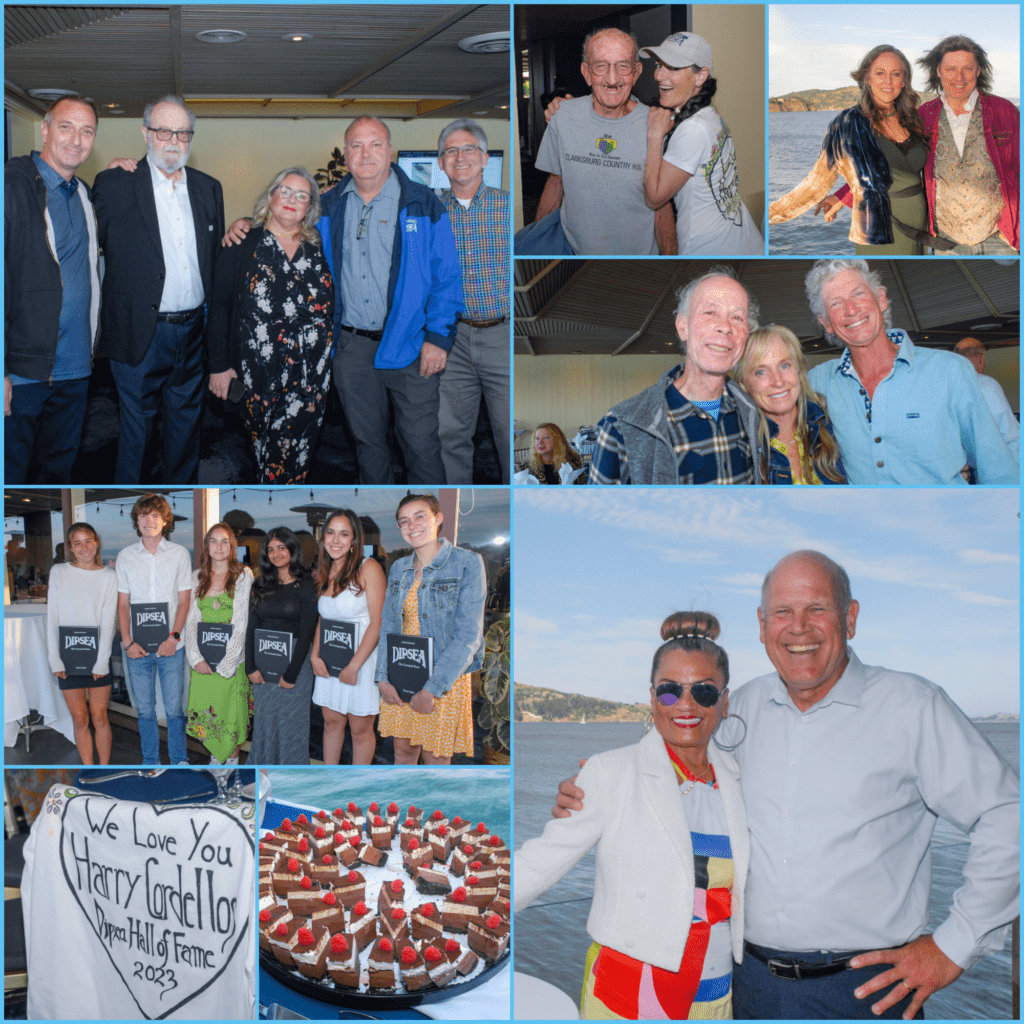In the days before Paddy O’Leary won Sunday’s 112th Annual Dipsea Race on June 11th, claiming his first career Dipsea win one year after he finished a closed second in 2022 to Eddie Owens, the Dipsea Race Foundation focused its efforts on the future, both of the Dipsea Race race and the educational future of Marin students.
Each year, the Dipsea Foundation awards $5,000 scholarships to graduating high school seniors who have participated in or volunteered with the Dipsea race.
Tamalpais High grad Zebah Mamoon was one of the six Dipsea Race Foundation scholarship winners this year who were honored during Friday’s Dipsea Hall of Fame and Awards Dinner at Spinnaker Restaurant in Sausalito. Mamoon, who will head to USC in the fall to study computer science and business management, received the Emma Reiman Memorial Scholarship. Other scholarship winners this year are Leah Cederborg (Santa Rosa), Eloise Campbell (Marin School of the Arts — Novato High), Audrey MacLean (Redwood), Ziggy Nacco (Marin Catholic) and Athena Jones (Terra Linda).
The event, held at the Spinnaker in Sausalito, honored Megan McGowan Sawyer, who won back-to-back Dipsea races before she was a teenager, and the late Harry Cordellos, who competed in more than a dozen Dipseas though blind up to the age of 70, will be the newest Dipsea HOF inductees. They will be honored at the Dipsea HOF dinner ceremony, which has moved to Spinnaker’s restaurant in Sausalito. McGowan Sawyer, now a mother of two who works as a medical laboratory scientist and microbiology supervisor at Stormont Vail Health in Topeka, KS, first competed in the Dipsea in 1989 and a year later – as an eight-year-old, 60-pound, second grader – finished runner-up in the race to Sal Vasquez, a Dipsea Hall of Famer who won a record seven Dipsea races.,
In 1991 and again in 1992, McGowan Sawyer won the race, becoming the first of only six females in the 117-year history of the Dipsea to win the 7.5-mile trail race from downtown Mill Valley to Stinson Beach multiple times. Shirley Matson, Melody-Anne Schultz, Jamie Rivers, Diana Fitzpatrick, and Chris Lundy are the others.
McGowan Sawyer, at nine years old in 1991, was the youngest competitor ever to win the Dipsea until 8-year-old Reilly Johnson finished first 19 years later. She still owns the Dipsea age group records for ages 7, 8, 9, and 10.
Cordellos, who was living in Novato until his death on Easter Sunday, competed in more than a dozen Dipseas from 1972 to 2008, but perhaps his most famous race was in 1979 when he and Mike Restani, Harry’s running partner and guide, were filmed competing in the race for a 1980 short documentary movie “Survival Run.”
Restani was attending a seminar for the Bay-to-Breakers race when he saw a call for runners to help guide and train Cordellos for a 50 mile Primo Ultramarathon in Hawaii. Restani, who wanted to run a marathon, had heard that Cordellos had competed in multiple marathons, wrote down Cordellos’ phone number and called him.
“I thought `If this guy can run a marathon he can get me through one,’ ” says Restani, now living in New Mexico. “I just picked it up right away running with him. We ran 30 miles the first day and have been friends ever since.”
In 1979, Joaquin Padro, the producer for “Survival Run,” had an idea to film Cordellas in action for a short documentary, but wanted something more unique than filming him running in a marathon. He picked the Dipsea – a 7.5 mile trail race from downtown Mill Valley to Stinson Beach on a scenic yet tight, hilly, and sometimes treacherous course that, a quarter of a mile into the race, climbs the infamous Dipsea Stairs – three flights totaling 680 steps — and follows the historic and picturesque Dipsea Trail through the edge of the National Park Service’s Muir Woods along the south flank of Mt. Tamalpais to its highest point at Cardiac Hill (1,360 feet above sea level) before descending down to the finish line on the shore of Stinson Beach State Park in the Golden Gate National Recreation Area.
The Dipsea is challenging for a sighted person, much less a blind one. “It’s challenging even if he has a good guide,” Restani says. “I called everything and that gave him confidence. He said one time `That lousy rock is following us all the way down. He could see the rock up closely.”
Magus Films contracted with a helicopter to provide aerial footage and other cameramen captured Cordellas and Restini running along the race route.
“They hauled a 16 mm camera, a tripod and a sound boom and all through Swoop Hollow,” Restani says. “It was a real race.”
Very real for Cordellos. “The Dipsea Race is like life. You don’t win it. You survive it,” Cordellos said.
As usual, the Dipsea Race Foundation continues its efforts to improve the infrastructure around the Dipsea Race. The foundation is currently focused on replacing the current footbridge over Redwood Creek in Muir Woods with a more permanent and safer structure so runners won’t have to plunge through the waters to cross the creek. The bridge is part of the National Park Service’s Redwood Renewal Sustainable Access Project.
MORE INFO ON THE DIPSEA RACE FOUNDATION.
Photos by Gary Ferber Photography.


